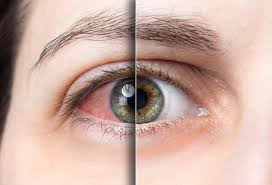Eye doctors have noted an increase in children requiring prescription eyeglasses and contacts for myopia (near-sightedness) since the 2020 pandemic began.
Increased screen time is being blamed as the culprit for the jump in vision problems.
The prevailing thought behind the vision problems is that children have been subjected to looking at screens for longer periods of time because of having school via virtual classrooms. The eye adjusts to working at a close focus, which may change and elongate the shape of the eye, causing myopia.
Another contributing factor can be less outdoor time, which can increase and worsen myopia since people tend to look farther away when participating in outside activities.
Researchers in China noted that children between the ages of 6 and 8 had an increase of myopia of up to three times over the last year compared to the previous five years. Similar statistics were noted by doctors in the United States. Myopia development at an earlier age raises the risk of developing vision-threatening problems later on in life.
Doctors urge parents to encourage their children to spend at least one hour per day outside doing physical activity. In addition to more outside time, doctors tell parents to apply the 20/20/20 rule for their kids: take a 20 second break for every 20 minutes of screen time and look 20 feet away. Taking these steps may help lessen the risk of their child developing myopia.














